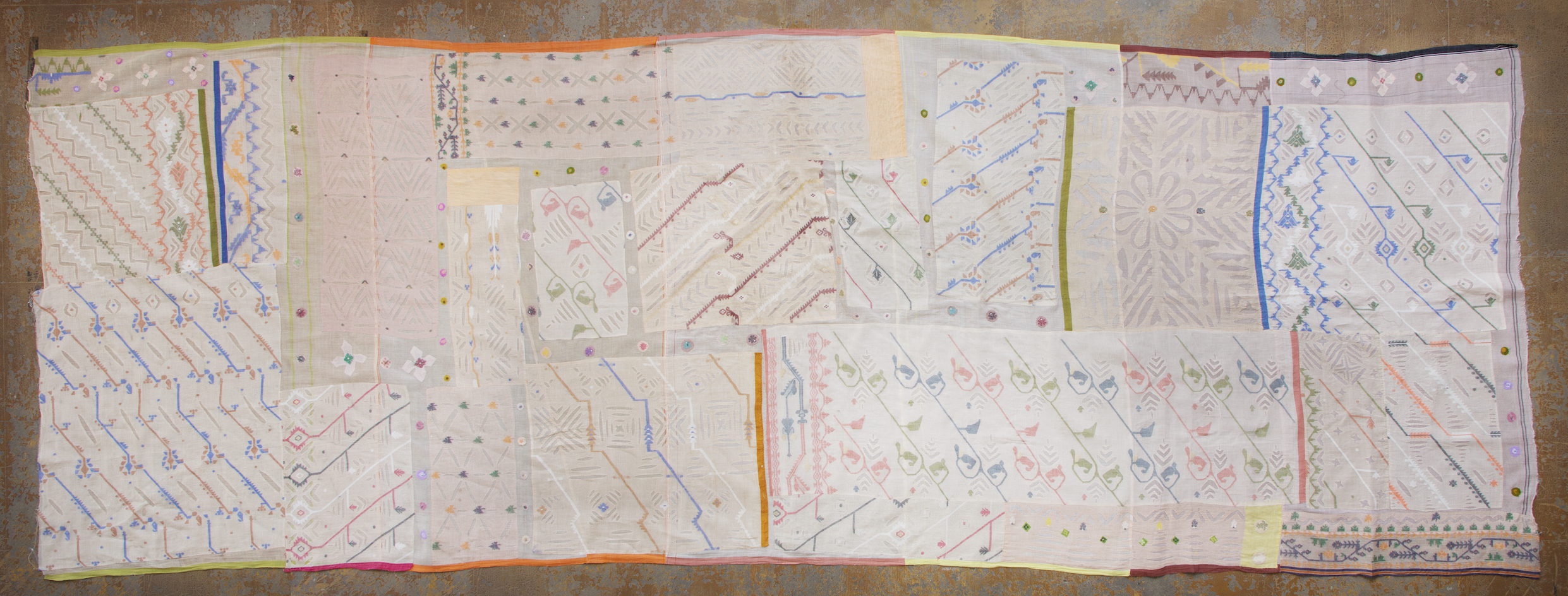Featuring creative and alternative approaches to confronting textile industry waste, “Scraps: Fashion, Textiles and Creative Reuse,” on view Sept. 23–April 16, 2017, presents the work of three designers who put sustainability at the heart of the design process. Highlighting contemporary design that embraces the tradition of using handcraft to give new life to scraps and cast-offs, the exhibition showcases work by Luisa Cevese, founder of Milan-based design studio Riedizioni; Christina Kim, founder of Los Angeles-based brand dosa; and Reiko Sudo, cofounder of Toyko textile design firm Nuno.
“Telling the inspiring and empowering stories of three women designers and entrepreneurs who hail from three continents, ‘Scraps’ brings critical focus to the human and environmental costs of fashion consumption while also offering viable solutions for reducing waste and raising awareness,” said Caroline Baumann, director of the museum. “Installed in the museum’s Design Process Galleries, the exhibition will be an illuminating display of design ingenuity.”
Through more than 40 works, the exhibition explores key facets of sustainability, such as the efficient use of materials and resources, the preservation of local craft traditions and the integration of new technologies in the recycling process. Works on view include tabletop accessories and handbags refashioned from silk selvage scraps by Cevese, appliquéd panels produced from recycled jamdani saris by Kim, and a variety of fabrics woven from kibiso, a luxury fiber Sudo developed using discarded parts of the silk cocoon. “Scraps” is organized by Matilda McQuaid, deputy director of curatorial and head of textiles and Susan Brown, associate curator of textiles.
Related educational programs include workshops for high school and college students, children and adults, and a panel discussion with the designers.
A 112-page illustrated catalog of the exhibition, written by the curators McQuaid and Brown with essays by the featured designers, will be published Sept. 20 by Cooper Hewitt, Smithsonian Design Museum.
“Scraps: Fashion, Textiles and Creative Reuse” is made possible by the generous support of Eileen Fisher.
Support is also provided by The Coby Foundation, Ltd.
Additional funding is provided by Ryohin Keikaku Co., Ltd.
In-kind support for Reiko Sudo, NUNO is provided by Tsuruoka City.
DESIGNERS
Luisa Cevese reappropriates production waste to create one-of-a-kind fashion and home accessories. Her designs for Riedizioni, which she founded in 1996, are made with scraps gathered from various phases of the textile production process, which she encases in translucent polyurethane. A self-taught designer, Cevese began creating textiles for fashion and interiors in 1984, providing work for companies such as Dolce & Gabbana, Hermès, Chanel and Comme des Garçons.
Christina Kim’s fashion brand, dosa, uses a system-wide approach to reuse and recycling, including using cutting-room waste to create new products. She draws on traditional, handcrafted and labor-intensive textile practices around the world, particularly India and Oaxaca, working with local artisans and engaging them in long-term collaborations. Widely recognized for her global and sustainable design practices, Kim was named by Time magazine as one of its Innovators of the Year in 2003 and received the “Innovation in Craft” Award by Aid to Artisans in 2006.
In 1984, Reiko Sudo cofounded Nuno, a textile design firm at the forefront of innovation that combines the Japanese handcraft tradition with advanced technologies. Over the years Sudo has proposed different initiatives to reduce waste, such as recycling polyester garments and using leftover scraps to create new textiles. Nuno’s fabrics have been featured in exhibitions around the world, including the Museum of Modern Art, New York; National Museum of Modern Art in Tokyo; Textile Museum in Washington, D.C., and Fowler Museum at UCLA in Los Angeles, among many others.
ABOUT COOPER HEWITT, SMITHSONIAN DESIGN MUSEUM
Founded in 1897, Cooper Hewitt is the only museum in the United States devoted exclusively to historic and contemporary design. On Dec. 12, 2014, Cooper Hewitt reopened in the renovated and restored Carnegie Mansion, which offers 60 percent more exhibition space to showcase one of the most diverse and comprehensive collections of design works in existence. The renovation of the Carnegie Mansion and museum campus was recognized with LEED Silver certification. Currently on view are nine exhibitions and installations featuring hundreds of objects throughout four floors of the mansion, including the fifth installment of the museum’s contemporary design exhibition series, “Beauty―Cooper Hewitt Design Triennial,” “Thom Browne Selects” and “Pixar: The Design of Story.” Visitors can experience a full range of new interactive capabilities, including exploring the collection digitally on ultra-high-definition touch-screen tables, drawing their own designs in the Immersion Room and addressing design problems in the Process Lab.
Cooper Hewitt is located at 2 East 91st Street at Fifth Avenue in New York City. Hours are Sunday through Friday, 10 a.m. to 6 p.m., and Saturday, 10 a.m. to 9 p.m. The Arthur Ross Terrace and Garden and Tarallucci e Vino cafe open at 8 a.m., Monday through Friday, and are accessible without an admissions ticket through the new East 90th Street entrance. The museum is closed on Thanksgiving Day and Christmas Day. Public transit routes include the Lexington Avenue 4, 5 and 6 subways (86th or 96th Street stations) and the Fifth and Madison Avenue buses. Adult admission, $18; seniors, $12; students, $9. Cooper Hewitt members and children younger than age 18 are admitted free. Pay What You Wish every Saturday, 6 to 9 p.m. The museum is fully accessible.
For further information, call (212) 849-8400, visit Cooper Hewitt’s website at cooperhewitt.org and follow the museum on twitter.com/cooperhewitt, facebook.com/cooperhewitt and instagram.com/cooperhewitt.
